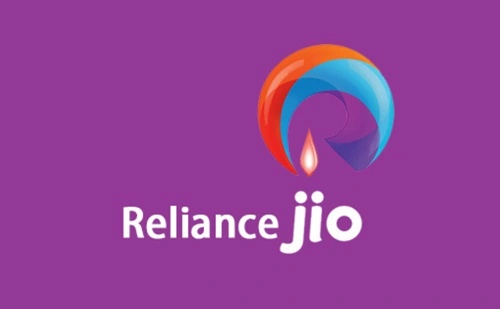Jio, from Reliance Industries, transformed India’s telecom. Mukesh Ambani founded it. RIL deals in textiles, petrochemicals, and telecom. Jio, Hindi for “live,” shook up India’s telecom. This blog looks at Jio’s model, founders Mukesh and Dhirubhai Ambani, and why it succeeded fast.
The Genesis of Jio
In 2010, RIL got involved with Jio by buying part of Infotel Broadband. Mukesh Ambani wanted a digital India with affordable internet for info, education, healthcare, and finance.
Jio started in 2016, giving free calls, messages, and 4G for six months. It shook things up, making others lower prices. Jio got lots of users fast, becoming India’s biggest mobile network.
| Name of the Company | Jio |
| Founded in | 2007 |
| Type of brand | Indian telecommunications company |
| Headquarters | Navi Mumbai |
| Founders | Shri Mukesh Ambani |
| Market Valuation | $107 Bn |
The Business Model Canvas of Jio
Osterwalder’s Canvas helps understand a company’s plan. It has nine parts: customers, value, channels, relationships, revenue, resources, activities, partnerships, and costs.
1. Customer Segments
Jio mainly focuses on India, serving people, families, and businesses. Its customers include:
- City and village users: Jio wants to connect both city and village areas with affordable and good-quality telecom services.
- People with lower incomes: Jio’s low prices brought in many who couldn’t afford fast internet before.
- Small and medium-sized businesses (SMEs): Jio’s digital services help SMEs work better and save money.
2. Value Prepositions
Jio gives good phone services at low prices. Key points include:
- Cheap and fast internet: Jio made quick internet affordable for many with its low-cost plans.
- Free calls and messages: Jio surprised everyone by giving free voice calls and messages.
- Digital services hub: Jio offers many digital services – entertainment, shopping, learning, health, and money – all together.
- Strong network: Jio spent a lot to build a strong and reliable network for smooth, fast data.
- Listens to customers: Jio hears customers out, giving plans and services that suit them.
3. Channels
Jio reaches customers through:
- Jio Stores: Jio has shops in India where people buy devices, SIM cards, and recharge plans.
- Online: Customers use Jio’s website and app for services and recharges.
- Other shops: Jio partners with local stores to sell its stuff.
- Business team: Jio’s team for companies gives them plans that fit their needs.
4. Customer Relationships
Jio makes strong bonds with customers by:
- Helping out: Jio supports customers 24/7 through phone, email, chat, and social media.
- Self-service: Customers manage accounts, check usage, and recharge on Jio’s website and app.
- Loyalty program: Jio Prime gives customers special benefits, discounts, and premium content.
- Community talks: Jio connects with customers on social media, at events, and through sponsorships.
5. Revenue Streams
Jio makes money in different ways:
- Calls and data: Jio earns from customer plans for calls and internet.
- Digital services: JioTV, JioCinema, and JioSaavn make money from subscriptions and ads.
- Devices: Jio sells phones, routers, and accessories in stores and online.
- Business services: Jio helps businesses with internet, cloud services, and tech, earning from subscriptions and usage.
- Commissions: Jio earns from partners selling its stuff in other stores.
6. Key Resources
Jio relies on key things:
- Network stuff: Jio’s towers, cables, and data centers give good services.
- Spectrum licenses: Jio owns important licenses allowing 4G and 5G services all over India.
- Digital apps: Jio’s digital tools like MyJio, JioTV, and JioCinema build its big digital system.
- Ideas and rights: Jio owns patents and trademarks protecting its unique tech and brand.
- People: Jio needs skilled workers like engineers, developers, and sales folks for its work and growth.
7. Key Activities
Jio does key activities:
- Network work: Jio builds and keeps a strong network for good, fast connections.
- Marketing and sales: Jio advertises and sells to get and keep customers.
- Research and development: Jio keeps making new tech, products, and services.
- Partnerships: Jio works with others to offer more and reach more people.
- Customer support: Jio helps customers and keeps good connections with them.
8. Key Partnerships
Jio teams up with others for success:
- Tech partners: Jio works with global tech companies for better networks.
- Entertainment partners: Jio partners with Disney+ Hotstar, Netflix, and Amazon Prime Video for lots of shows.
- Money partners: Jio teams up with banks and payment services for easy digital transactions.
- Shopping partners: Jio collaborates with Amazon and Flipkart for special deals.
- Government partners: Jio works closely with the government to follow rules and help make policies.
9. Cost Structure
Jio’s costs include:
- Network work: Jio spends a lot on building and keeping its network.
- Spectrum license fees: Jio pays the government to use specific airwaves.
- Employee costs: Jio pays its workers, including salaries, benefits, and training.
- Ads expenses: Jio invests in ads to make its brand known and get customers.
- Research and development (R&D): Jio spends on making new tech, products, and services.
- Content fees: Jio pays to show stuff from providers on its digital platforms.
Conclusion
Jio became a big deal in India because of its smart business plan, great leaders, and always thinking about customers. We used Osterwalder’s Canvas to see how Jio deals with customers, gives value, sells stuff, connects with users, makes money, has important things, does key stuff, partners up, and spends money. Jio’s story shows how good ideas and plans can make a big difference and help lots of people.
Recommended















